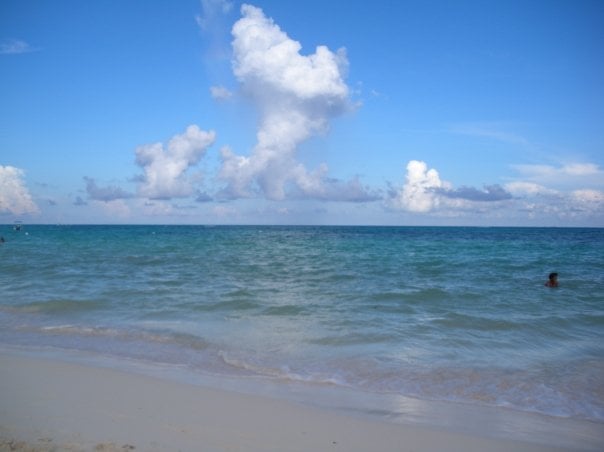Clouds And Precipitation Practice Assessment

Practice for the Clouds and Precipitation type Tuiz!
- 1.
Violent thunderstorms are most likely to form from what type of clouds?
- A.
Cirrus
- B.
Cumulonimbus
- C.
Cumulus
- D.
Altostratus
Correct Answer
B. CumulonimbusExplanation
Cumulonimbus clouds are the correct answer because they are tall and dense, often reaching high altitudes in the atmosphere. These clouds are associated with thunderstorms and can produce heavy rain, lightning, strong winds, and even hail. The vertical development of cumulonimbus clouds allows for the rapid upward movement of air, which contributes to the formation of thunderstorms. Additionally, the anvil-shaped top of cumulonimbus clouds is a characteristic feature of mature thunderstorms.Rate this question:
-
- 2.
What prefix is used to identify clouds that appear from 2000 to 6000 meters above the surface?
- A.
Cirro-
- B.
Nimbo-
- C.
Strato-
- D.
Alto-
Correct Answer
D. Alto-Explanation
The prefix "alto-" is used to identify clouds that appear from 2000 to 6000 meters above the surface. This prefix is commonly used to describe mid-level clouds, which are typically composed of water droplets and/or ice crystals. These clouds are often found in the altocumulus and altostratus cloud types, and they can have various shapes and appearances. The alto- prefix helps to differentiate these clouds from other cloud types that appear at different altitudes.Rate this question:
-
- 3.
What process is primarily responsible for the formation of precipitation in warm clouds?
- A.
Collision-coalescence process
- B.
Bergeron process
- C.
Sublimation process
- D.
Wet adiabatic process
Correct Answer
A. Collision-coalescence processExplanation
The collision-coalescence process is primarily responsible for the formation of precipitation in warm clouds. This process occurs when cloud droplets collide and merge together to form larger droplets. As these droplets continue to collide and grow, they eventually become too heavy to be supported by the cloud's updraft and fall to the ground as precipitation. This process is most common in tropical and subtropical regions where the cloud temperatures are warm enough to keep water in liquid form throughout the cloud.Rate this question:
-
- 4.
Clouds are formed based on __________________ and height.
Correct Answer
formExplanation
Clouds are formed based on specific atmospheric conditions, such as temperature, humidity, and air pressure, as well as the presence of condensation nuclei. Additionally, the height at which clouds form is determined by the stability of the air mass and the lifting mechanisms present in the atmosphere. These factors contribute to the process of cloud formation, where water vapor condenses into visible water droplets or ice crystals, resulting in the formation of clouds.Rate this question:
- 5.
The main difference between sleet and hail is that sleet are small particles of ice and hail has to be twice the size as sleet.
- A.
True
- B.
False
Correct Answer
B. FalseExplanation
The explanation for the given correct answer is that the statement is incorrect. The main difference between sleet and hail is not the size. Sleet refers to frozen raindrops that fall as ice pellets, while hail is formed when there are strong updrafts in a thunderstorm that carry raindrops upward into extremely cold areas of the atmosphere, causing them to freeze and accumulate layers of ice. Therefore, the size of hail does not have to be twice the size of sleet.Rate this question:
-
- 6.
Fog is....
- A.
Evaporation from the ground.
- B.
Condensation on the ground.
- C.
A cloud with its base on or near the ground.
- D.
A cloud that sank to the ground.
Correct Answer
C. A cloud with its base on or near the ground.Explanation
Fog is a meteorological phenomenon characterized by a cloud with its base on or near the ground. It is formed when air near the ground cools down and reaches its dew point, causing water vapor to condense into tiny water droplets. This results in the formation of a cloud-like layer that reduces visibility. Unlike evaporation or condensation on the ground, fog specifically refers to the presence of a cloud at or near the surface of the Earth.Rate this question:
-
- 7.
Knowing the different _______________ allows us to predict the weather.
Correct Answer
cloud typesExplanation
Knowing the different cloud types allows us to predict the weather because each type of cloud formation is associated with specific weather conditions. By understanding the characteristics and behavior of different cloud types, meteorologists can analyze atmospheric patterns and make predictions about upcoming weather events. For example, cumulonimbus clouds are often associated with thunderstorms, while cirrus clouds may indicate fair weather. Therefore, knowledge of cloud types is crucial in forecasting weather patterns and understanding atmospheric dynamics.Rate this question:
- 8.
What type of cloud is shown in this image?
- A.
Cumulus
- B.
Cumulonimbus
- C.
Altocumulus
- D.
Nimbostratus
Correct Answer
A. CumulusExplanation
The correct answer is cumulus because the image shows a cloud with a puffy and cotton-like appearance, which is characteristic of cumulus clouds. Cumulus clouds are usually found at low to middle altitudes and are associated with fair weather. They are formed by the upward movement of warm air and indicate stability in the atmosphere.Rate this question:
-
Quiz Review Timeline +
Our quizzes are rigorously reviewed, monitored and continuously updated by our expert board to maintain accuracy, relevance, and timeliness.
-
Current Version
-
Mar 19, 2023Quiz Edited by
ProProfs Editorial Team -
Oct 15, 2009Quiz Created by
Mjoseph
 Back to top
Back to top


